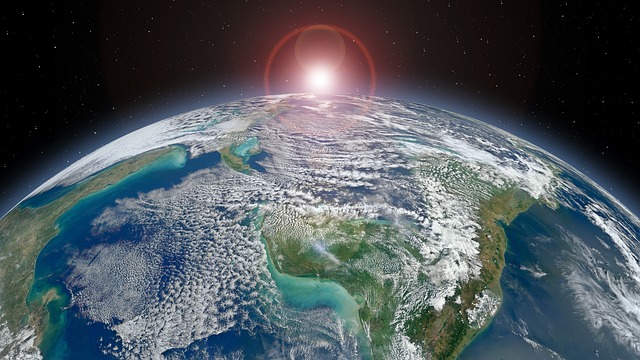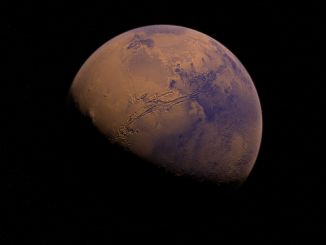
These flashes, or glints of light, were first noticed back in 1993 by renowned astronomer Carl Sagan as he was analyzing images captured by the Galileo spacecraft when it examined the Earth during a gravitational assist swing before heading out to Jupiter. Back then, what Sagan and his colleagues noted was that the flashes or ‘mirror-like reflections’ were only evident over water, but not on land.
More than two decades later, these flashes have caught the attention of NASA as its Earth Polychromatic Imaging Camera (EPIC) aboard NOAA’s Deep Space Climate Observatory (DSCOVR) was able to take pictures of hundreds of such flashes over the course of one year.
Just like Sagan did, Alexander Marshak — DSCOVR deputy project scientist at NASA’s Goddard Space Flight Center — initially believed that the flashes were mere reflections of sunlight. And the most logical source of that reflection was ground water sources like oceans and lakes.
Upon re-examining the images, however, Marshak and other NASA scientists noticed that the flashes weren’t just happening over water sources; they were happening over land as well. Which means water couldn’t have been what was causing the reflections; it had to be ice crystals floating high above the atmosphere.
As explained by Marshak in a statement they issued: “The source of the flashes is definitely not on the ground. It’s definitely ice, and most likely solar reflection off of horizontally oriented particles.”
Arriving at that conclusion wasn’t that simple, though. The scientists studied the images further and were able to catalogue a total of 866 flashes captured by EPIC from June 2015 until August 2016. Based on the logic that if these flashes were indeed caused by sunlight being reflected, they should only occur at certain spots on the globe where the angle between DSCOVR and Earth was the same as the angle between the Sun and the Earth. Only under that given condition EPIC would have been able to pick up the light being reflected.
And they turned out to be right. The location for the flashes they plotted based on those angles matched the actual sites where the flashes were spotted.
This led them to conclude that the flashes weren’t coming from a light source originating from the Earth such as lightning. Because as Marshak said, ‘Lightning doesn’t care about the sun and EPIC’s location.’ The flashes had to be mere reflections of sunlight.
As for what was the source of the reflection, the researchers plotted angles to find out if the light could be reflecting off water (in the form of ice particles) floating high up in the atmosphere. They used EPIC’s instruments to measure the height of the clouds and found that wherever there was such glint of light, there were cirrus clouds present, about 3 to 5 miles up, confirming their theory that it was definitely ice particles causing the reflection.
Armed with the knowledge of what these flashes are, this newfound information can potentially be used to detect the same kind of phenomenon on other planets. And if such are found, it may be regarded as an indication of the presence of ice particles in the atmosphere, and maybe even the possibility that life could exist on such exoplanets.
Closer to home, researchers are planning to look into these flashes further to determine whether they could have any impact on the amount of sunlight that can enter into our atmosphere. If they did, this information can then be incorporated into computer models that determine how much heat leaves and enters our atmosphere.
The research was recently published in the journal Geophysical Research Letters. You may also check out this video released by NASA describing their findings.
Disclaimer: This page contains affiliate links. If you choose to make a purchase after clicking a link, we may receive a commission at no additional cost to you. Thank you for your support!




Leave a Reply